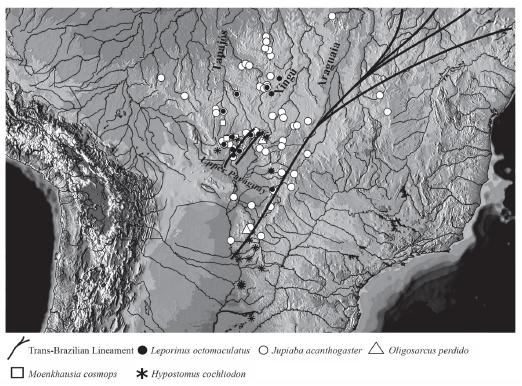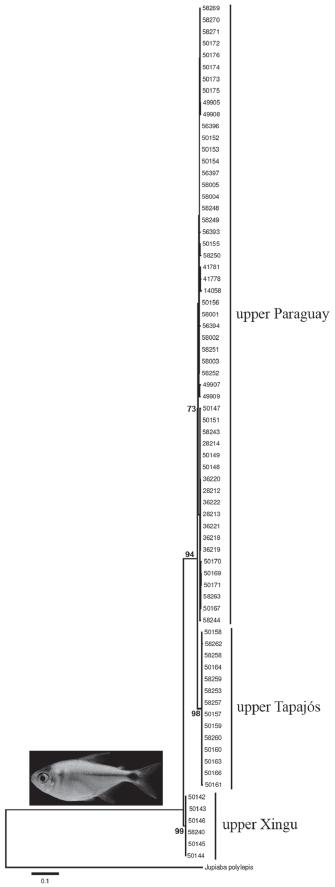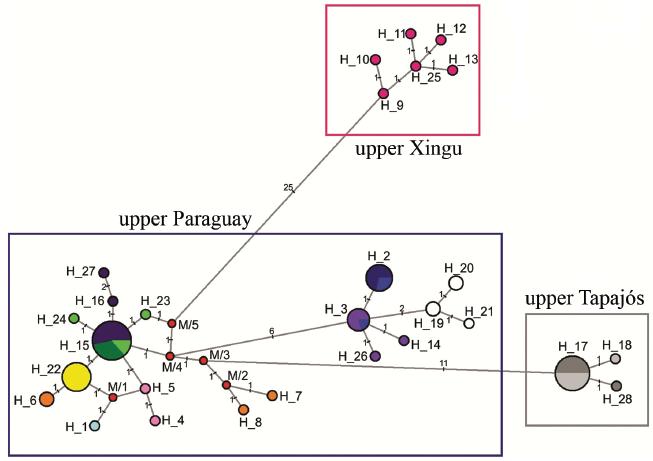The analysis of the distribution patterns presented by examples of freshwater fishes restricted to headwater habitat: the anostomid Leporinus octomaculatus, the characins Jubiaba acanthogaster, Oligosarcus perdido, Moenkhausia cosmops, Knodus chapadae, Planaltina sp., the loricariid Hypostomus cochliodon, and the auchenipterid Centromochlus sp. provided evidences of a relatively recent shared history between the highlands of the upper rio Paraguay and adjoining upland drainage basins. Restricted to headwater of the uplands in the upper rio Paraguay and adjoining basins, these species provide biological evidence of the former extension of the central Brazilian plateau before the origin of the Pantanal Wetland. Disjunction took place due to an ecological barrier to these rheophilic taxa represented tectonic subsidence related to the origin of the Pantanal Wetland. Molecular analysis of Jubiaba acanthogaster revealed that the sample from the upper rio Xingu basin are the sister-group of a clade that includes samples from the upper rio Arinos (upper rio Tapajós) plus the upper rio Paraguay basin, supporting the assumption that the origin of the upper rio Paraguay basin causing vicariance between this basin and the upper rio Tapajós is the least vicariant event in the evolutionary history of the group.
Brazil; Brazilian highlands; Historical biogeography; Paleodrainage; Tectonic evolution




